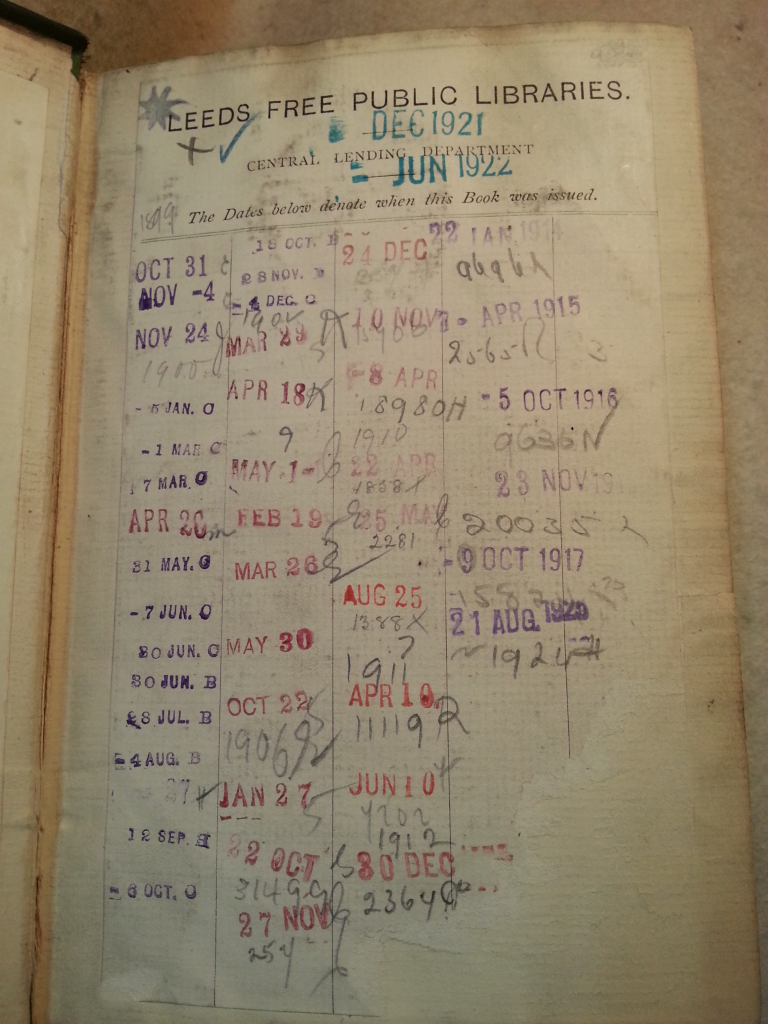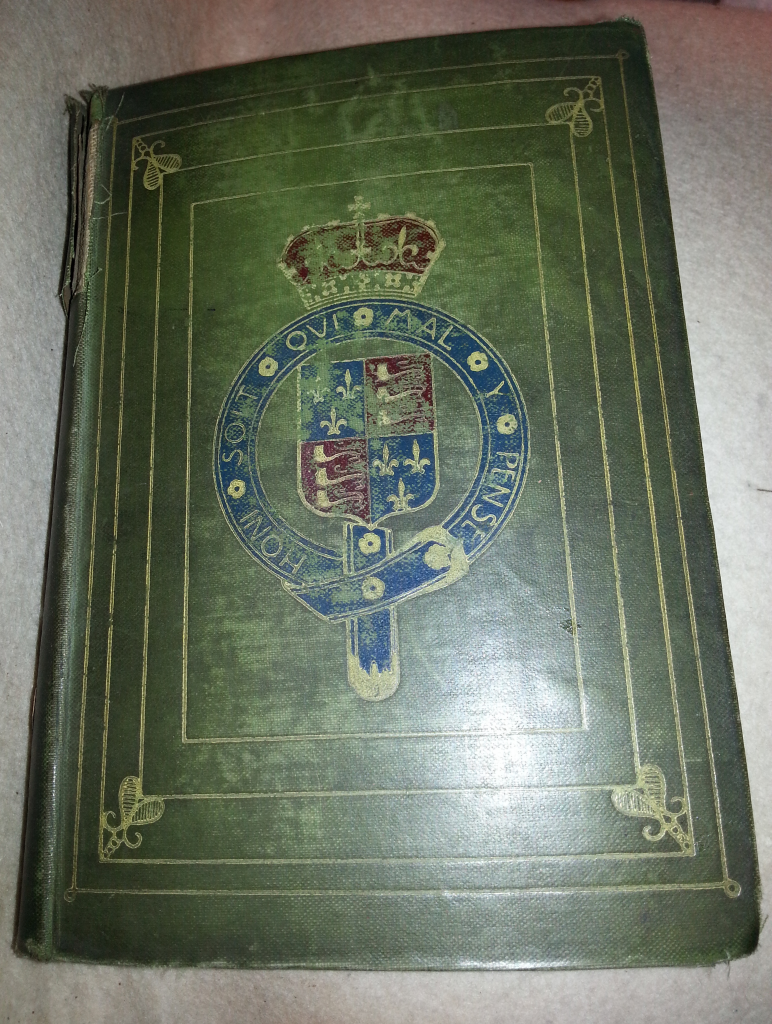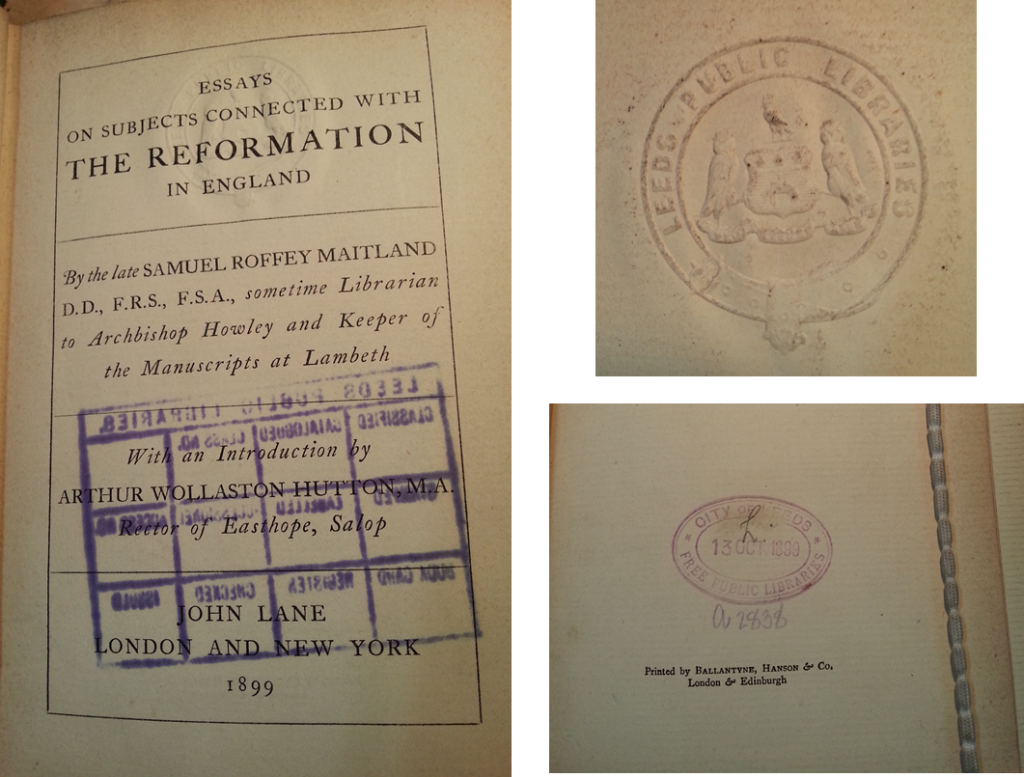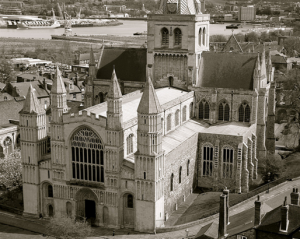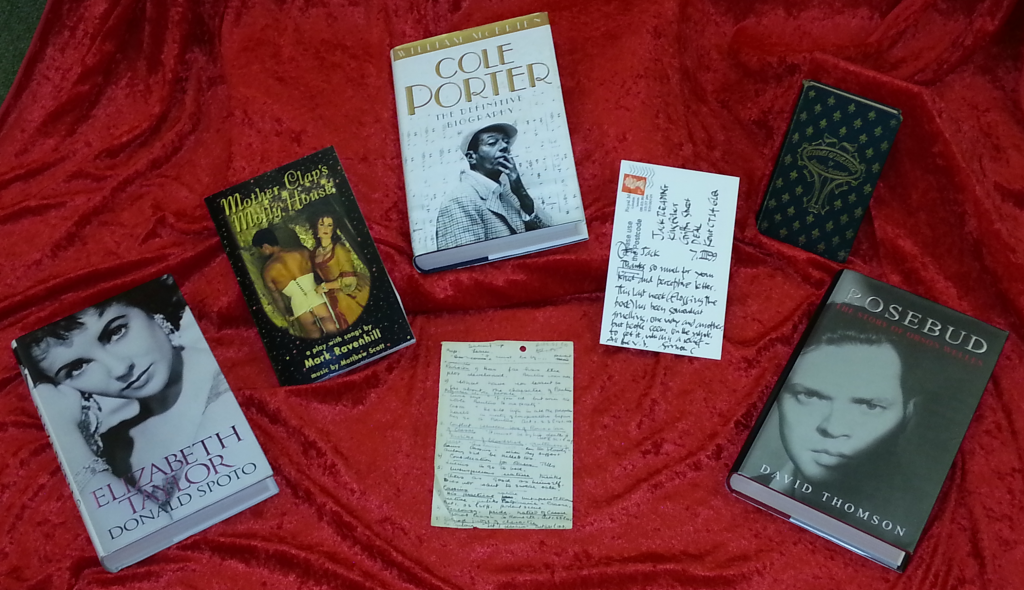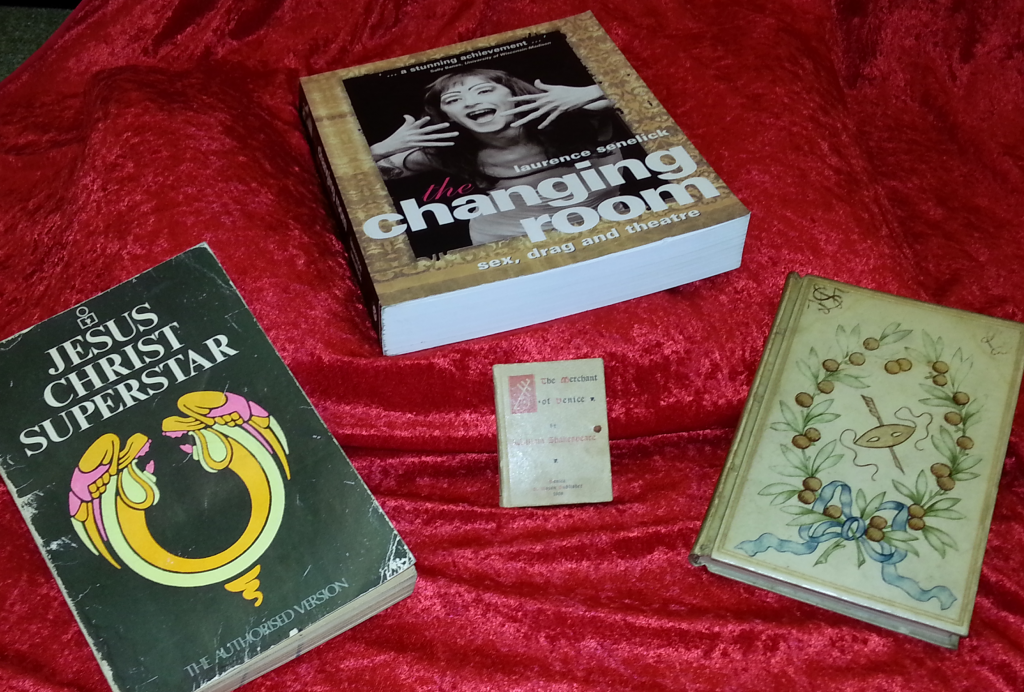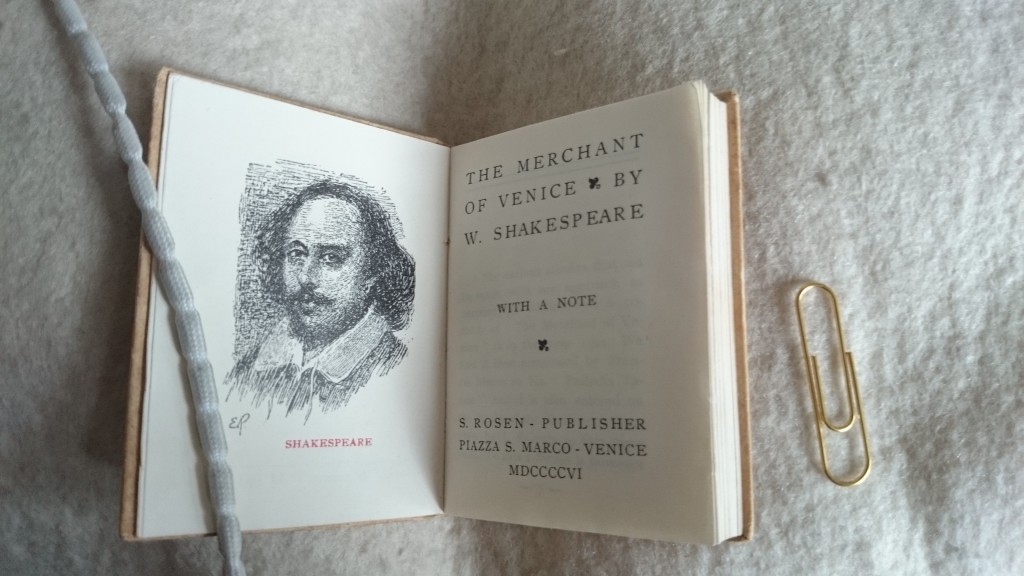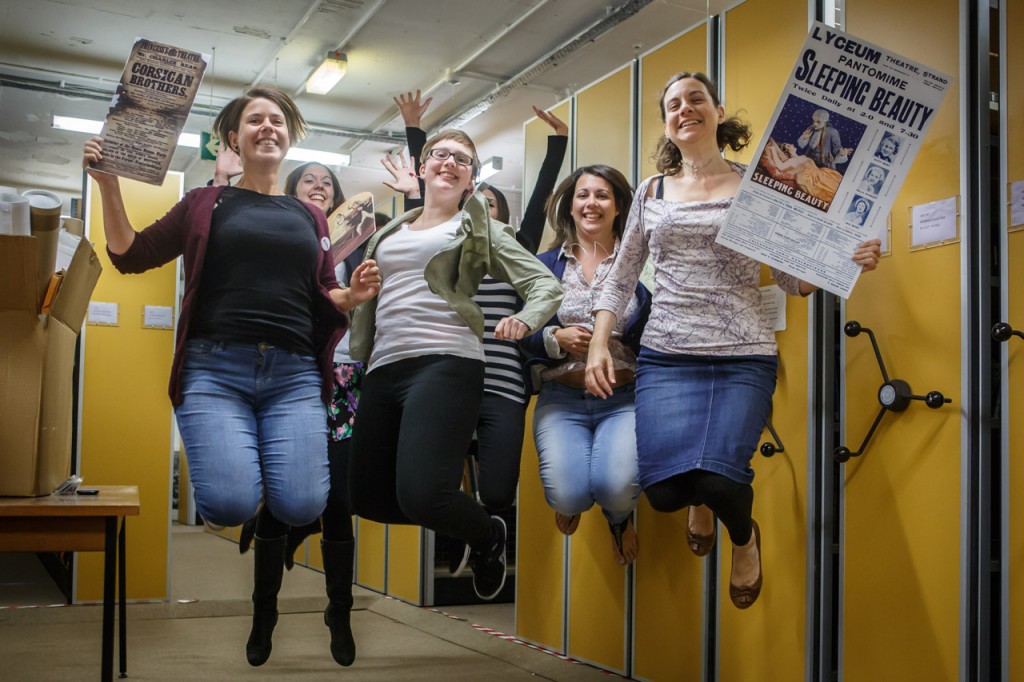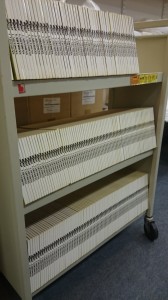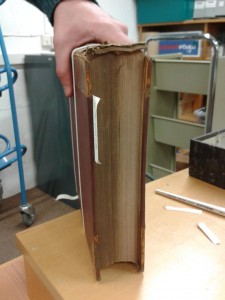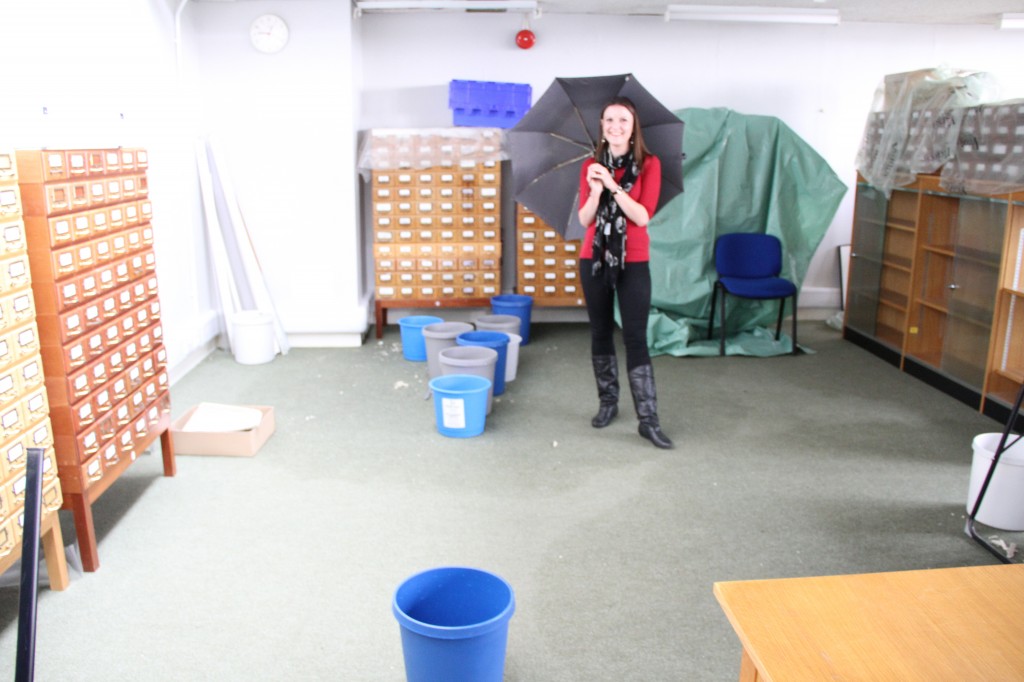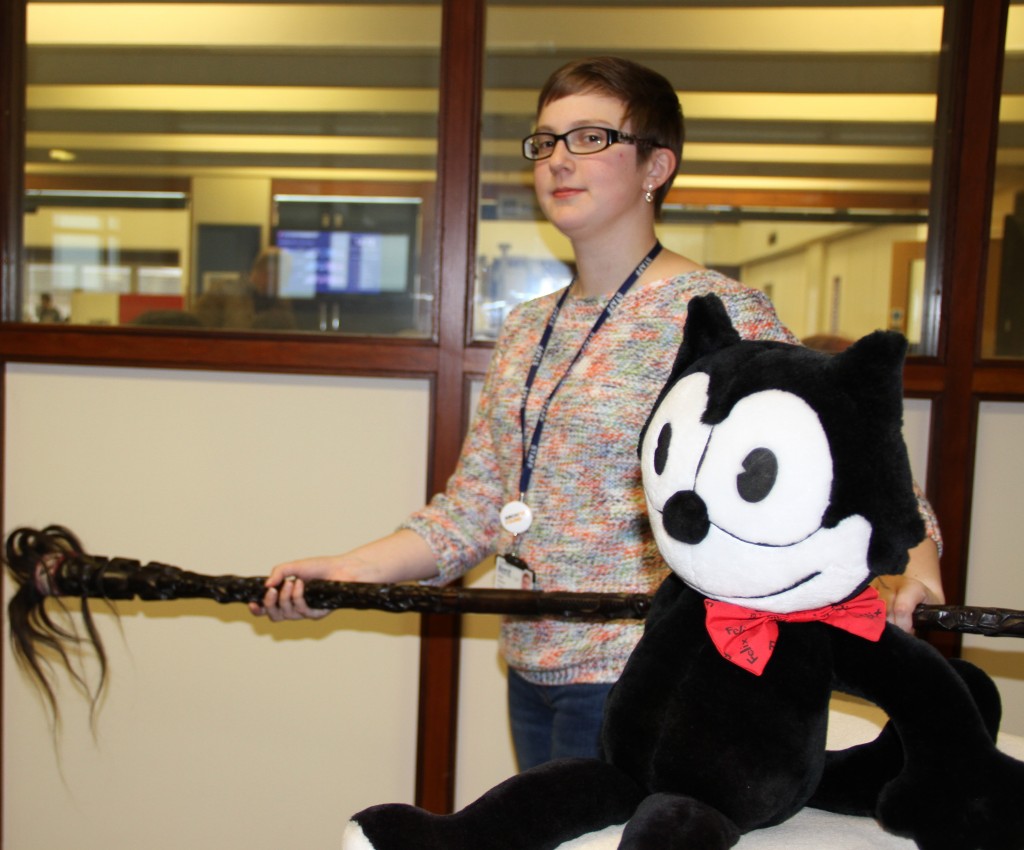As I waited to begin working on the Rochester Cathedral collection, I found myself excited with the anticipation of getting to work with so many beautiful handcrafted bindings and ornate illustrations.
Including information about the bindings of a book in the catalogue records I create is relatively new practice for me. I was lucky enough to visit Canterbury Cathedral Library before the start of this project, where I received some expert guidance in recognising different elements of book bindings. I was struck by the beauty of even the most ‘basic’ historical book bindings, and couldn’t wait to start seeing what the Rochester Cathedral collection had in store for me.
‘Sancti Bonaventurae ex Ordine Minorum S.R.E. Episcopi Card. Albanen. eximii Eccles. doctoris Operai’ is one such book that offers both beautiful bindings as well as artwork.

Full gilt edges from the book ‘Sancti Bonaventurae ex Ordine Minorum S.R.E. Episcopi Card. Albanen. eximii Eccles. doctoris Opera’
I was initially struck by the full gilt edges that seem to glow in the picture above. This is the finest example of gilt edges that I have as yet come across in this collection. However, I have learned to not be fooled by this type of decoration, as all that glitters is not gold. It was common for cheaper editions of books to be decorated with gold coloured paint, but this can quickly dull in appearance.
Gilt edges were not always applied to all sides of a book, and there are many examples of others within the collection that are gilt along only the top edge. This is because gilding book edges is as equally practical as it is beautiful, and when the gold leaf is applied with glue, it can help to protect the pages from the damage that can be caused by dust and moisture. By gilding the top edges of the pages, the books are protected from dust when shelved upright.
Gilding was not only applied to the edges of this particular book, as it has also been applied to this crest, which adorns the front cover. I recently discovered a very interesting blog which shows how gold tooling and gilding is applied to a bookbinding. Take a look here to find out more: https://lilbookbinder.wordpress.com/bookbinding-portfolio-2/gold-tooling-and-gilding/
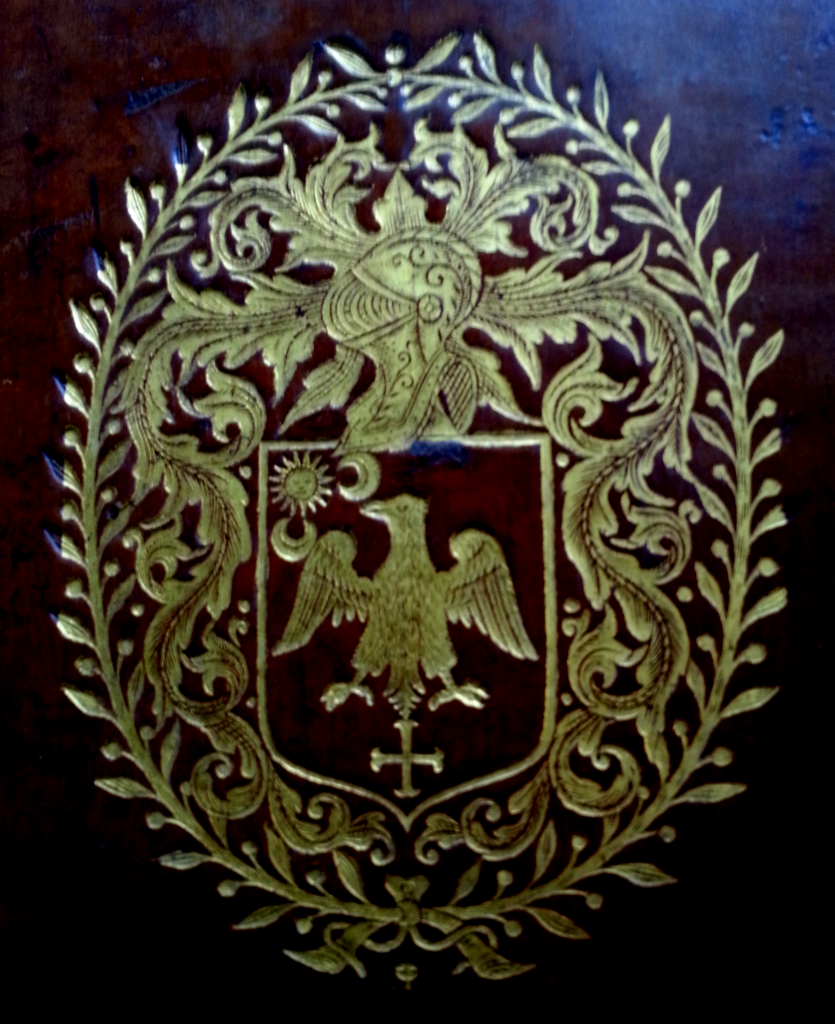
Gold tooled coat of arms on the front cover of ‘Sancti Bonaventurae ex Ordine Minorum S.R.E. Episcopi Card. Albanen. eximii Eccles. doctoris Opera’
The engraved title page and frontispiece (the image facing a books title page) are both as interesting to me as the binding itself, and I was initially struck by the extent of decoration across these two pages, which have been created by printers Anton (Antonius) Hierat (active 1597-1627) and Balthasar Lipp (active -1623).
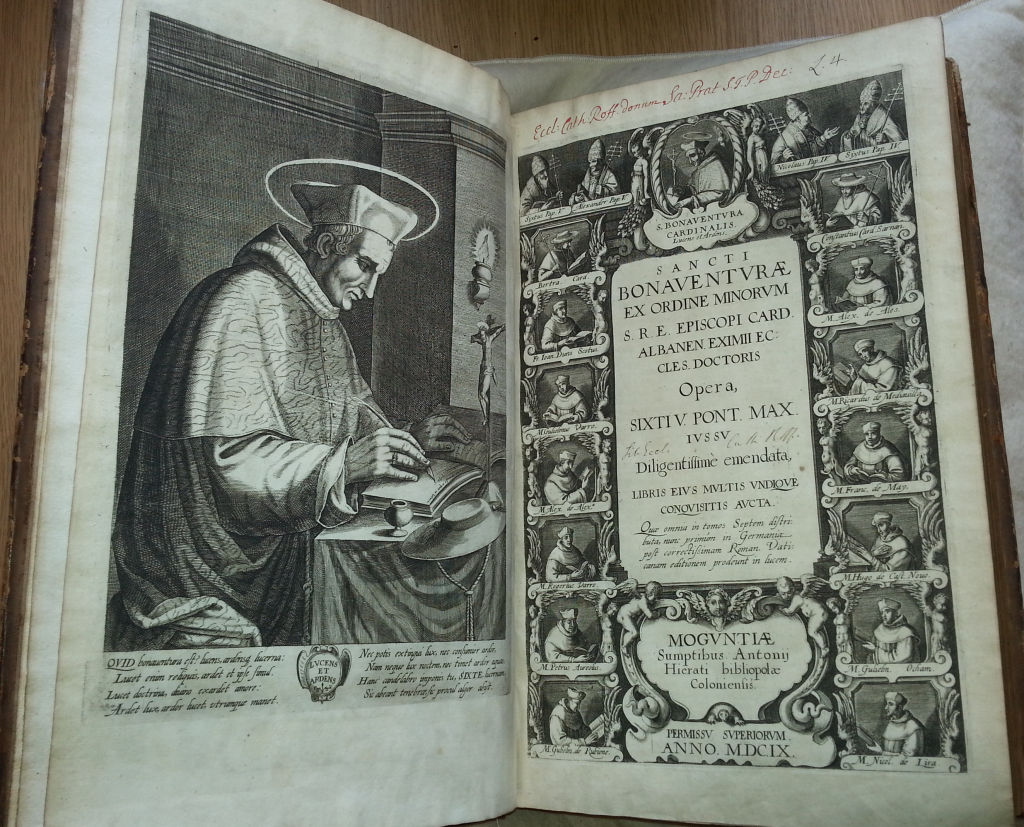
Title page and frontispiece from ‘Sancti Bonaventurae ex Ordine Minorum S.R.E. Episcopi Card. Albanen. eximii Eccles. doctoris Opera’
The images across the title pages appear to have been created using an intaglio printing technique. Armed with only a very basic knowledge about this method of printing, I decided to go on a journey to find out more, and have made some fascinating discoveries along the way:
- ‘Intaglio’ comes from the Italian, meaning ‘to carve.’
- Intaglio printing was the main method of book illustration between the late 16th century and early 19th century.
- The earliest form of intaglio printing could date back as far as the 1430’s.
- This style of printing uses a variety of techniques, such as engraving, etching, stipple and aquatint. All are based on the same principle of making an impression into a metal plate.
- Illustrating books with engravings didn’t start becoming popular until the 16th century. The results can often be seen, as with this book, in the form of engraved title pages and frontispieces.
- The art of illustrating books with intaglio prints began to lose popularity in the 1800’s, mainly because of the expense involved in this process.
Although there are great many useful resources that offer advice on this topic, it can still be tricky identifying precise traits to help with verifying the printmaking technique used. However, there are a couple of things that I have picked up over the course of this project that are proving helpful.
I always now check to see if there is a plate mark. Plate marks tell us that the image was created by either engravings, etchings, and other styles of printing associated with intaglio. The arrows on the image below point to the plate mark that surrounds the engraving from the main title page.
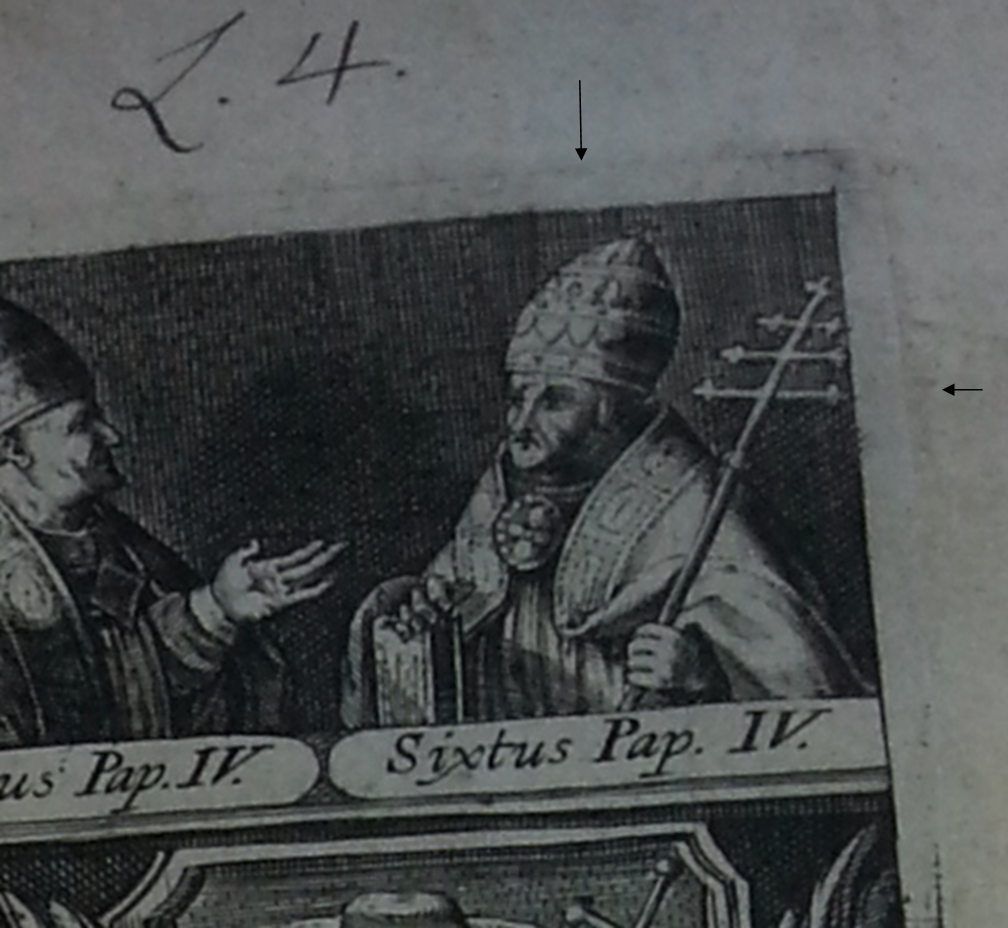
The faint line around the edge of the impression helps us to identify the intaglio technique.
I also try to look at the style of cross-hatching used in the creation of the image. I have learned that smooth flowing intersecting lines, like those shown in the hand of Saint Bonaventura, have been made using singles cuts. This helps me to identify the intaglio technique of engraving.

Detail from an image depicting Saint Bonaventura.
It isn’t always easy to identify the style of printing used to create the images, but it has been interesting to learn more about the methods used. I feel I have a new-found appreciation of the craftspeople of the day who would have applied a great deal of time, skill and care to their creations.
Today we live in fast paced society, with printing presses that have been able to respond to demand by utilizing technology, producing thousands of bestselling paperbacks to a disposable society. By stark contrast, I see rare books everyday such as this, that I regard as unique pieces of art, owing to the level of skill, time, and labour put into creating these masterpieces.
My hope is that this unique, historic and culturally fascinating collection is also appreciated for its art and for the skill used in the creation of the books, and that we can all enjoy them to their fullest, from the words, to the art works and the bindings that hold all of these together.

